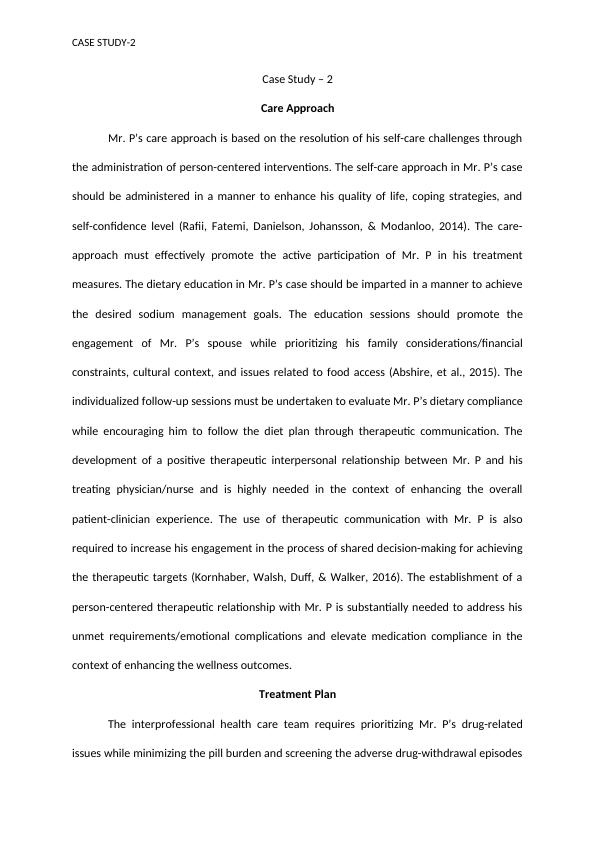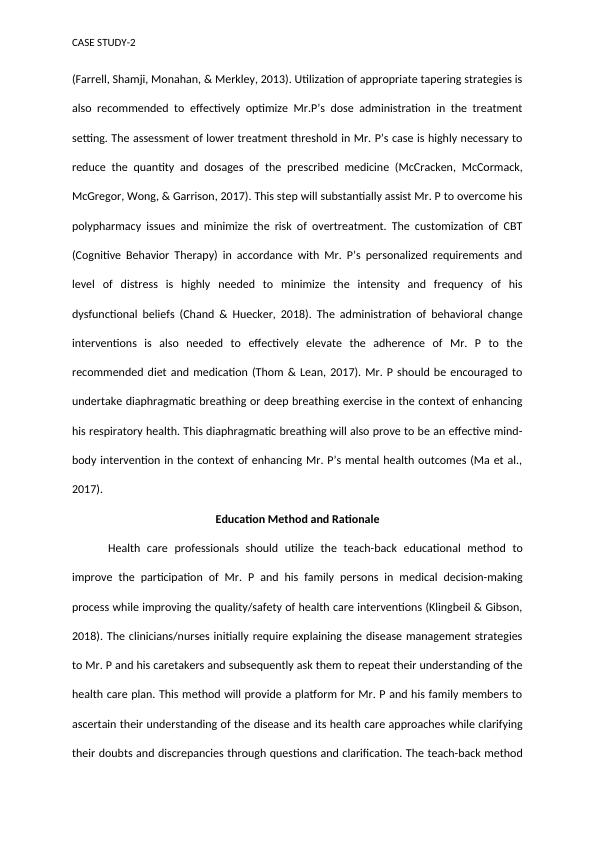Case Study-2: Care Approach and Treatment Plan
Write an essay describing the approach to care for a patient with cardiomyopathy and congestive heart failure, recommend a treatment plan, and provide a method for educating the patient and family.
8 Pages1523 Words176 Views
Added on 2023-06-03
About This Document
This case study discusses the care approach and treatment plan for Mr. P, including person-centered interventions, dietary education, and therapeutic communication. The treatment plan includes drug-related issues, CBT, and behavioral change interventions. The education method is the teach-back method, and the teaching plan includes weight monitoring, discharge medications, cardiac rehabilitation, and follow-up.
Case Study-2: Care Approach and Treatment Plan
Write an essay describing the approach to care for a patient with cardiomyopathy and congestive heart failure, recommend a treatment plan, and provide a method for educating the patient and family.
Added on 2023-06-03
ShareRelated Documents
End of preview
Want to access all the pages? Upload your documents or become a member.
Assignment on Nursing (docs)
|5
|946
|60
Nursing Assignment.
|4
|946
|96
Evidence-Based Health Care Priorities for Peter Mitchell
|7
|2199
|128
An etiquette in treating patient with diabetes and learning disability: The case of Mr. Stephens
|9
|2180
|231
Palliative Care: Nursing Strategies for Shortness of Breath and Social Isolation
|8
|1756
|409
NRSG370 – Clinical Integration - Speciality Practice Case Study 2022
|10
|3127
|15



